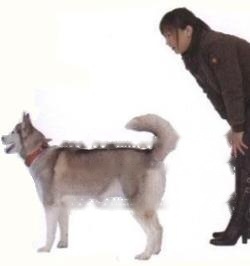Owners often don't pay special attention to dogs eye problems, but in fact, if the dog's eyes are uncomfortable or even sick, it will affect the quality of life at light level, and cause blindness in severe cases. Therefore, the owner should protect the life of the dog like he protects it.

Eye problems are usually easy to spot. But careless owners often make the mistake of thinking that as long as a dog eats well and doesn't suffer from mobility problems, it doesn't count as sick. Many times, it is this kind of mentality that makes the owner miss the initial signal of illness, and delay the minor illness into a serious illness.
Illness Signal 1: Abnormal tears
Tears are the fluids that help keep the eyes moist, and when they enter the gray layer, they are also used to clean the eyeball and flush it out. foreign body. Therefore, if you see your dog shed tears continuously, or even the color of the tears becomes cloudy, it means that there is a problem with the eyes.
Illness Signal 2: Mucus buildup
When the eyes are inflamed, the tears are mixed with purulent secretions, which make the tears cloudy and also become sticky. As a result, it is difficult for tears to drain from the tear ducts often, and they accumulate in the corners of the eyes, forming large lumps.
When your dog isn't sick, he may have eye mucus just after waking up, but not too much. In addition, the accumulation of a large amount of eye mucus may not only be an eye problem, but also may be suffering from diseases such as canine distemper, canine infectious hepatitis or fever, but these are accompanied by symptoms such as fever in addition to eye mucus.
Illness Sign 3: Swollen Eyelids
A dog's eyes may become inflamed, and the eyelids may become bloodshot, red, or even visibly swollen. You compare your dog's eyes carefully. If there is a noticeable difference, especially when the two eyelids suddenly become different in size, it is likely that the eyelid of the smaller eyelid is swollen.
Illness Signal 4: Redness of the Eyes
Redness, whether in the corners, lids, or whites of the eyes, indicates that something is wrong with the eyes. Most of these are keratitis and conjunctivitis problems. If the dog's blood circulation is not good, the conjunctiva will also be congested. The method of identification is very simple. The problem of the eyelid often occurs on only one side. When the conjunctiva of both eyes is red at the same time, it should be suspected that it is caused by other problems.
Ill Sign 5: Rubbing or Rubbing the Eyes
Dogs rubbing their glasses against the wall or rubbing their eyes with their paws can indicate itching around the eyes Or pain, another kind of rubbing the eyes may be vision loss, blurred vision or even invisible. Inflammation of the eye, retinal disease, fundus hemorrhage or cataracts, glaucoma can cause dogs to rub their eyes. When foreign objects such as gray layers enter the eyes, dogs will also feel awkward and rub their eyes.
Ill Sign 6: Bulging or Whitening
A dog's bulging eyeball is a sign of increased intraocular pressure, which can lead to glaucoma, When dogs develop glaucoma, their strength will decline, and they will also feel severe pain. If a white cloudy substance appears in the black eyeball of a dog, its strength will also decline, which is a manifestation of cataract. Senile cataracts often appear after the age of 6, but puppies may also have congenital cataracts.
![[Dog Training 5] The training method of pet dog dining etiquette](/static/img/12192/12192_1.jpg)




